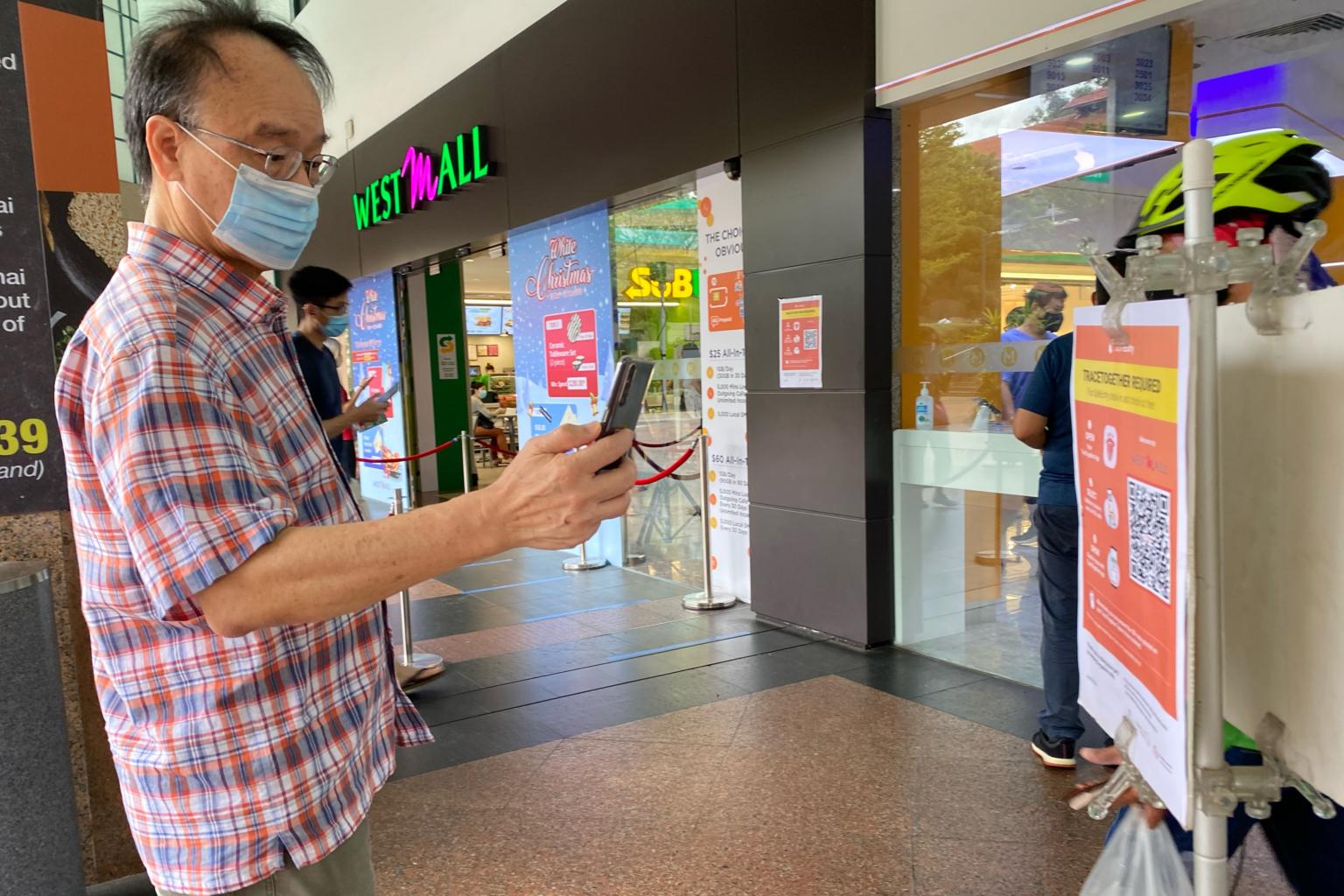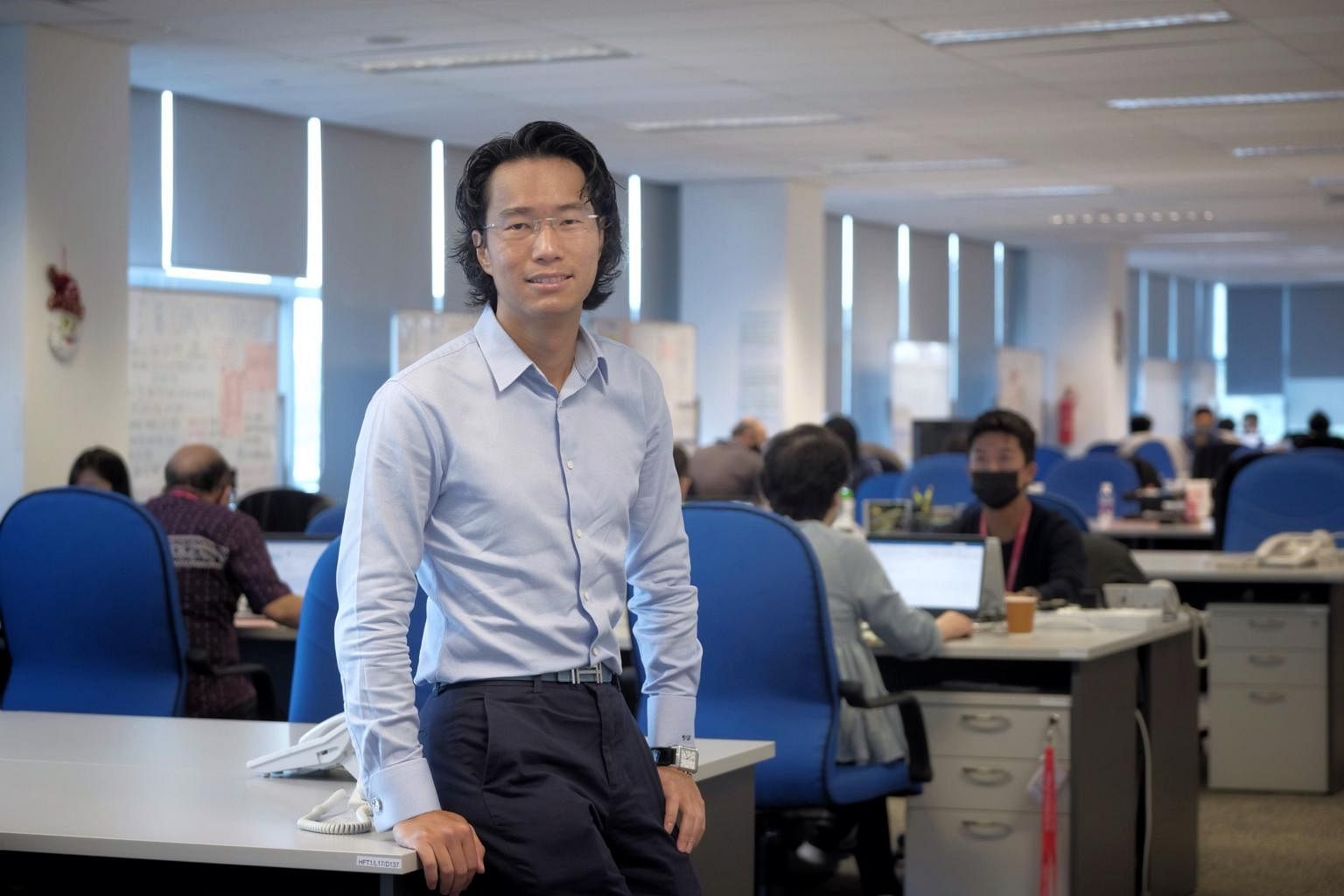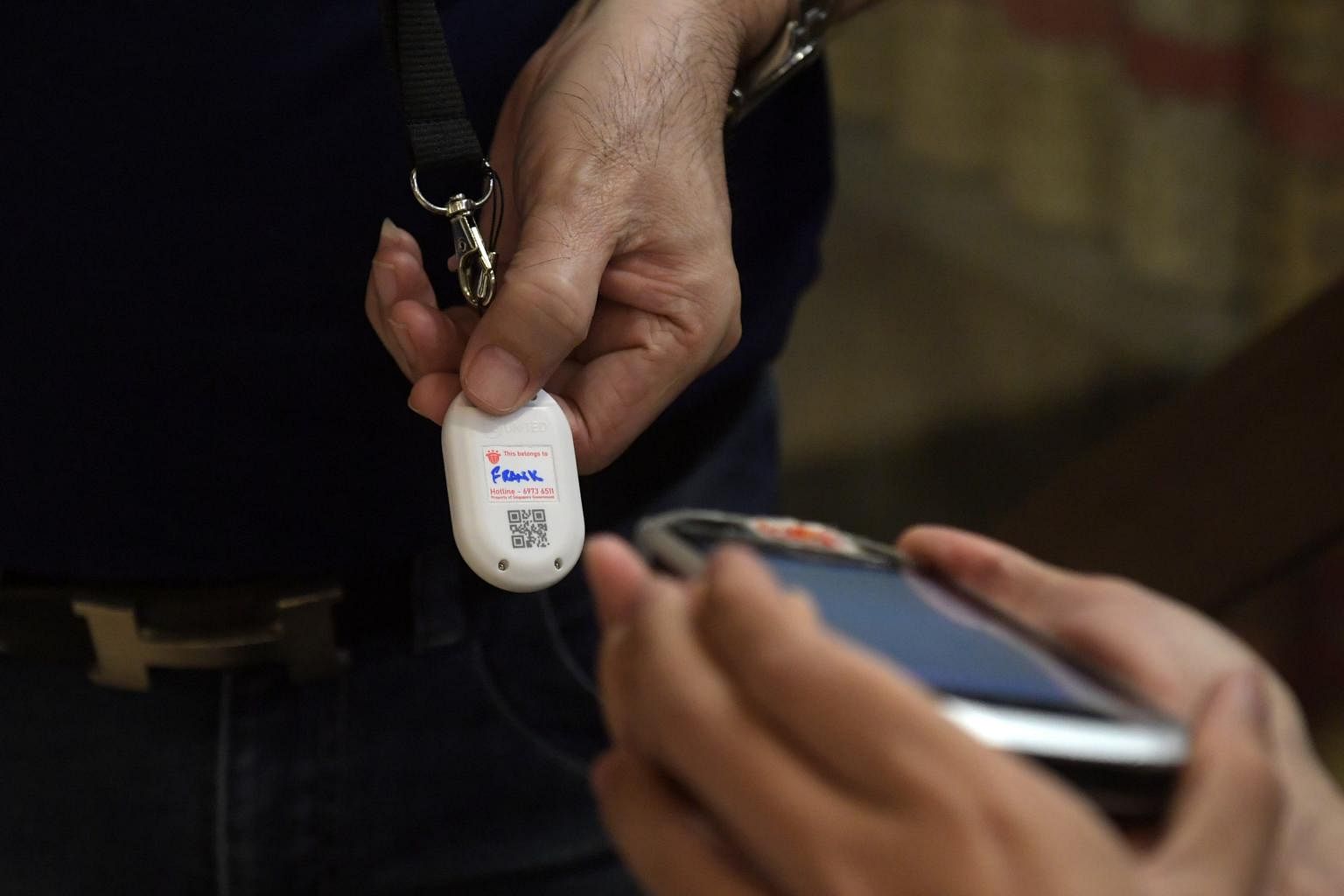Time for contact tracing cut by more than half with TraceTogether, SafeEntry
Sign up now: Get ST's newsletters delivered to your inbox

SafeEntry logs the places a person has been via QR code scanning.
ST PHOTO: CHONG JUN LIANG
Kenny Chee
Follow topic:
SINGAPORE - Tracing the steps of a Covid-19 patient, such as the location for lunch last week, can be laborious, often because many cannot remember mundane matters.
But technological tools like TraceTogether and SafeEntry, introduced a few months after the pandemic hit Singapore about a year ago, have helped tremendously with the process, making it easier and faster now, said contact tracers from the Ministry of Health (MOH).
More than 80 per cent of the population is now on the TraceTogether programme, up from 78 per cent two weeks ago.
Mr Narasimhan Rao, 38, who has been a contact tracer for about nine months, said it was tedious in the early days.
He told reporters on Tuesday (Jan 26): "We had to verify every piece of information in detail because there were positive cases who gave inaccurate information. That's why we had to verify the information from a variety of sources, for example, family members or colleagues."
Patients usually did not withhold information deliberately, said Mr Rao, who interacted with members of the public when he used to work in the aviation sector.
Another contact tracer, Mr Lin Zhaoquan, 34, said that patients were usually given the benefit of the doubt initially. "When it comes to finer details, they can't remember," said Mr Lin, who has been on the job for about four months. He used to be a leading steward with Singapore Airlines.
Mr Lin said that in one instance, a patient told contact-tracing officers that he recalled he was on leave and was not working on certain dates. But investigations through other sources showed that he was working the morning shift at the time.
But SafeEntry check-in data verified and confirmed that he did work, said Mr Lin. The patient's TraceTogether data also showed that he had been in close contact with some colleagues who were therefore at risk.
A tracer can make about 30 to 50 phone calls a day but when the number of new daily infections was in the hundreds, such as in May last year, the calls easily doubled.

TraceTogether and SafeEntry data can easily halve the amount of time taken for contact tracing.
Associate Professor Vernon Lee, the head of MOH's contact tracing centre, said that from the moment a patient is identified to quarantining him and his close contacts could take four days. But this could be reduced to fewer than two days, with the data and better investigative abilities now at hand.
Depending on the complexity of a case, it could even be within a day.

The TraceTogether app was announced in March last year and exchanges Bluetooth signals with nearby users to quickly track people exposed to Covid-19 patients.
SafeEntry, announced a month later, logs the places a person has been via QR code scanning.
The Government is worried about people not using TraceTogether because of concerns that its data could be used for police investigations into serious crimes, instead of only for contact tracing, said Prof Lee, who is also director of the communicable diseases division at MOH.

He warned of the risks of not employing the technology to help fight the virus.
"Every minute more we spend on contact tracing means a minute more for the virus to transmit," he said, adding that using TraceTogether and SafeEntry helps "protect yourself and the people around you".
Prof Lee said that if there are no safety measures - such as contact tracing, mask wearing and safe distancing - to slow the spread of the virus, "within months, the population (in Singapore) can be overcome and infected by Covid-19".
Mr Lin says his previous experience has come in handy in his current role which, on some occasions, can be trying.
"Sometimes, (people) just want to vent their frustrations. You need a big heart and listen to what they want first and then direct this to relevant stakeholders," said Mr Lin.


